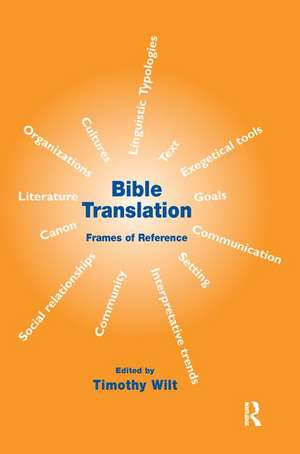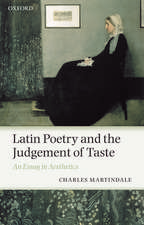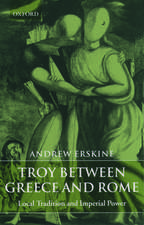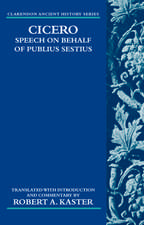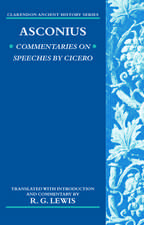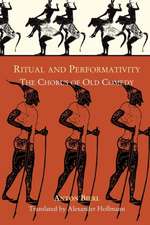Bible Translation: Frames of Reference
Autor Timothy Wilten Limba Engleză Hardback – 26 iul 2016
The Bible translator is encouraged to appreciate various approaches to translation in view of the wide variety of communicative, organizational and sociocultural situations in which translation occurs. However, literary representation of the Scriptures receives special attention since it has been neglected in earlier, influential works on Bible translation.
In addition to useful introductory and concluding sections, the book consists of six chapters: Scripture Translation in the Era of Translation Studies; Translation and Communication; The Role of Culture in Communication; Advances in Linguistic Theory and their Relavance to Translation; Biblical Studies and Bible Translation; and A Lterary Approach to Biblical Text Analysis and Translation.
The authors are translation consultants for the United Bible Societies. They have worked with translation projects in various media and in languages ranging from ones of a few hundred speakers to international ones, in Africa, the Americas and Asia.
| Toate formatele și edițiile | Preț | Express |
|---|---|---|
| Paperback (1) | 330.44 lei 6-8 săpt. | |
| Taylor & Francis – noi 2002 | 330.44 lei 6-8 săpt. | |
| Hardback (1) | 764.20 lei 6-8 săpt. | |
| Taylor & Francis – 26 iul 2016 | 764.20 lei 6-8 săpt. |
Preț: 764.20 lei
Preț vechi: 1154.58 lei
-34% Nou
Puncte Express: 1146
Preț estimativ în valută:
146.23€ • 152.99$ • 121.47£
146.23€ • 152.99$ • 121.47£
Carte tipărită la comandă
Livrare economică 02-16 aprilie
Preluare comenzi: 021 569.72.76
Specificații
ISBN-13: 9781138172555
ISBN-10: 1138172553
Pagini: 306
Dimensiuni: 156 x 234 mm
Greutate: 0.45 kg
Ediția:1
Editura: Taylor & Francis
Colecția Routledge
Locul publicării:Oxford, United Kingdom
ISBN-10: 1138172553
Pagini: 306
Dimensiuni: 156 x 234 mm
Greutate: 0.45 kg
Ediția:1
Editura: Taylor & Francis
Colecția Routledge
Locul publicării:Oxford, United Kingdom
Public țintă
PostgraduateCuprins
Bible Translation: Contents
Introduction
Chapter 1: Scripture translation in the era of translation studies
Aloo Osotsi Mojola
1.1 The dynamic equivalent approach to translation and its institutionalization
1.2 Evaluation of the TAPOT approach to translation
1.3 The emergence of translation studies as an autonomous discipline
1.4 Some contemporary translation approaches
1.4.1 Functionalist
1.4.2 Descriptive
1.4.3 Text-linguistic
1.4.4 Relevance theory
1.4.5 Post-colonial
1.4.6 Literalist
1.4.7 Foreignization v. domestication
1.5 Conclusion
Chapter 2: Translation and communication
Timothy Wilt
2.1 Components of communication
2.1.1 Participants, text and medium
2.1.1.1 Participants
2.1.1.1.1 Relationships between participants
2.1.1.1.2 Relationships between participants and a text
2.1.1.1.3 A multitude of participants in the translation process
2.1.1.2 Text
2.1.1.2.1 Texts composed of signs
2.1.1.2.2 Selection and perception of a text's signs
2.1.1.3 The medium for communicating a text
2.1.2 Frames
2.1.2.1 Cognitive frames
2.1.2.2 Sociocultural frames
2.1.2.3 Organizational frames
2.1.2.3.1 Multiple organizational frames
2.1.2.3.2 Frames of a particular organization
2.1.2.3.2.1 Organizational structure and process
2.1.2.3.2.2 Organizational cultures and subcultures
2.1.2.3.2.3 Gatekeeping
2.1.2.3.2.4 Power
2.1.2.3.2.5 Training
2.1.2.4 Communication-situation frame
2.1.2.4.1 Some basic elements of any communication situation
2.1.2.4.2 Dramatic changes in the communication situations of Bible translation
2.1.2.5 Text frames
2.1.3 Goals
2.1.3.1 Some fundamental goals
2.1.3.1.1 Text goals
2.1.3.1.2 Organizational goals
2.1.3.2 Conflicting goals
2.1.3.3 Ritual communication
2.1.4 Exchange: focus on the translation process
2.1.4.1 Assessing the communication situation
2.1.4.2 Facilitating cooperation
2.1.4.3 Goals and resources
2.1.4.4 Academic and technical training
2.1.4.5 Producing the text
2.1.4.6 Evaluation 2.1.4.7 Further product development 2.2 Graphic representation of the communication model 2.2.1 Easy communication
2.2.2 Differences from earlier models of communication
2.2.3 Difficult communication
2.3 Conclusion
Chapter 3: The role of culture in communication
Robert Bascom
3.1 Katan's Translating Cultures
3.2 Women, Fire and Dangerous Things
3.3 Night, sun and wine
3.4 "Key"
3.5 A map of some fundamental biblical notions
3.5.1 Reciprocity
3.5.1.1 Tsedeq/tsedeqah
3.5.1.2 'emet/'emunah/he'emin
3.5.1.3 Go'el
3.5.1.4 Hesed
3.5.2 Frames and boundaries in ancient Israelite society: holiness and pollution in their social and religious contexts
3.5.2.1 Time
3.5.2.2 Space
3.5.2.3 Creation
3.5.2.4 Symbolic numbers
3.5.2.5 State
3.5.2.6 The human body
3.5.2.7 Dietary laws
3.5.2.8 Animal sacrifices
3.5.2.9 Summary
3.5.3 Sickness and healing in the New Testament
3.6 Conclusion
Chapter 4: Advances in linguistic theory and their relevance to translation
L. Ronald Ross
4.1 Universalism versus relativity
4.1.1 Metaphor
4.1.2 Spatial orientation
4.2 Typology
4.2.1 Constituent order typology
4.2.2 Grammatical typology
4.2.3 Typological semantics
4.3 Cross-cultural semantics
4.4 Pragmatics
4.4.1 The cooperative principle
4.4.2 Speech acts
4.5 Sociolinguistics
4.6 Discourse analysis
4.7 Information structure
4.8 Conclusion
Chapter 5: Biblical studies and Bible translation
Graham Ogden
5.1 Long-standing concerns: new finds and tools
5.1.1 Lexical and grammatical studies
5.1.2 Historical-critical studies
5.1.3 Textual criticism
5.1.4 Archaeology
5.1.5 Source criticism and redaction criticism
5.1.6 Canonical criticism
5.1.7 Intertestamental studies
5.1.8 Intertextuality
5.2 Some recent trends in interpreting the Bible
5.2.1 Reader-response criticism
5.2.2 Feminist approaches
5.2.3 Cross-cultural biblical interpretation
5.2.4 Post-colonial studies
5.2.5 Region-centric studies
5.2.6 Ideology and exegesis
5.2.7 Sociological approaches
5.3 Conclusion
Chapter 6: A literary approach to biblical text analysis and translation
Ernst Wendland
6.1 Unity
6.1.1 Connectivity
6.1.2 Intertextuality
6.1.3 Archetypes
6.2 Diversity
6.3 Rhetoricity
6.4 Structure
6.4.1 Genres
6.4.2 Pros
6.4.3 Poetry
6.5 Patterning
6.6 Foregrounding
6.6.1 Prominence
6.6.2 Progression
6.7 Imagery
6.8 Phonicity
6.9 Dramatics
6.10 Conclusion
7. Conclusion
Timothy Wilt
Appendices
A Cognitive frames: some pedagogical suggestions
B Courses for a 4-year Bible translation program
C Course outlines for Bible Translation I and II
D Seminar: Introduction to Bible translation
E Translation and communication: course outline
F Some communicational aspects of various translations
References
Index
Introduction
Chapter 1: Scripture translation in the era of translation studies
Aloo Osotsi Mojola
1.1 The dynamic equivalent approach to translation and its institutionalization
1.2 Evaluation of the TAPOT approach to translation
1.3 The emergence of translation studies as an autonomous discipline
1.4 Some contemporary translation approaches
1.4.1 Functionalist
1.4.2 Descriptive
1.4.3 Text-linguistic
1.4.4 Relevance theory
1.4.5 Post-colonial
1.4.6 Literalist
1.4.7 Foreignization v. domestication
1.5 Conclusion
Chapter 2: Translation and communication
Timothy Wilt
2.1 Components of communication
2.1.1 Participants, text and medium
2.1.1.1 Participants
2.1.1.1.1 Relationships between participants
2.1.1.1.2 Relationships between participants and a text
2.1.1.1.3 A multitude of participants in the translation process
2.1.1.2 Text
2.1.1.2.1 Texts composed of signs
2.1.1.2.2 Selection and perception of a text's signs
2.1.1.3 The medium for communicating a text
2.1.2 Frames
2.1.2.1 Cognitive frames
2.1.2.2 Sociocultural frames
2.1.2.3 Organizational frames
2.1.2.3.1 Multiple organizational frames
2.1.2.3.2 Frames of a particular organization
2.1.2.3.2.1 Organizational structure and process
2.1.2.3.2.2 Organizational cultures and subcultures
2.1.2.3.2.3 Gatekeeping
2.1.2.3.2.4 Power
2.1.2.3.2.5 Training
2.1.2.4 Communication-situation frame
2.1.2.4.1 Some basic elements of any communication situation
2.1.2.4.2 Dramatic changes in the communication situations of Bible translation
2.1.2.5 Text frames
2.1.3 Goals
2.1.3.1 Some fundamental goals
2.1.3.1.1 Text goals
2.1.3.1.2 Organizational goals
2.1.3.2 Conflicting goals
2.1.3.3 Ritual communication
2.1.4 Exchange: focus on the translation process
2.1.4.1 Assessing the communication situation
2.1.4.2 Facilitating cooperation
2.1.4.3 Goals and resources
2.1.4.4 Academic and technical training
2.1.4.5 Producing the text
2.1.4.6 Evaluation 2.1.4.7 Further product development 2.2 Graphic representation of the communication model 2.2.1 Easy communication
2.2.2 Differences from earlier models of communication
2.2.3 Difficult communication
2.3 Conclusion
Chapter 3: The role of culture in communication
Robert Bascom
3.1 Katan's Translating Cultures
3.2 Women, Fire and Dangerous Things
3.3 Night, sun and wine
3.4 "Key"
3.5 A map of some fundamental biblical notions
3.5.1 Reciprocity
3.5.1.1 Tsedeq/tsedeqah
3.5.1.2 'emet/'emunah/he'emin
3.5.1.3 Go'el
3.5.1.4 Hesed
3.5.2 Frames and boundaries in ancient Israelite society: holiness and pollution in their social and religious contexts
3.5.2.1 Time
3.5.2.2 Space
3.5.2.3 Creation
3.5.2.4 Symbolic numbers
3.5.2.5 State
3.5.2.6 The human body
3.5.2.7 Dietary laws
3.5.2.8 Animal sacrifices
3.5.2.9 Summary
3.5.3 Sickness and healing in the New Testament
3.6 Conclusion
Chapter 4: Advances in linguistic theory and their relevance to translation
L. Ronald Ross
4.1 Universalism versus relativity
4.1.1 Metaphor
4.1.2 Spatial orientation
4.2 Typology
4.2.1 Constituent order typology
4.2.2 Grammatical typology
4.2.3 Typological semantics
4.3 Cross-cultural semantics
4.4 Pragmatics
4.4.1 The cooperative principle
4.4.2 Speech acts
4.5 Sociolinguistics
4.6 Discourse analysis
4.7 Information structure
4.8 Conclusion
Chapter 5: Biblical studies and Bible translation
Graham Ogden
5.1 Long-standing concerns: new finds and tools
5.1.1 Lexical and grammatical studies
5.1.2 Historical-critical studies
5.1.3 Textual criticism
5.1.4 Archaeology
5.1.5 Source criticism and redaction criticism
5.1.6 Canonical criticism
5.1.7 Intertestamental studies
5.1.8 Intertextuality
5.2 Some recent trends in interpreting the Bible
5.2.1 Reader-response criticism
5.2.2 Feminist approaches
5.2.3 Cross-cultural biblical interpretation
5.2.4 Post-colonial studies
5.2.5 Region-centric studies
5.2.6 Ideology and exegesis
5.2.7 Sociological approaches
5.3 Conclusion
Chapter 6: A literary approach to biblical text analysis and translation
Ernst Wendland
6.1 Unity
6.1.1 Connectivity
6.1.2 Intertextuality
6.1.3 Archetypes
6.2 Diversity
6.3 Rhetoricity
6.4 Structure
6.4.1 Genres
6.4.2 Pros
6.4.3 Poetry
6.5 Patterning
6.6 Foregrounding
6.6.1 Prominence
6.6.2 Progression
6.7 Imagery
6.8 Phonicity
6.9 Dramatics
6.10 Conclusion
7. Conclusion
Timothy Wilt
Appendices
A Cognitive frames: some pedagogical suggestions
B Courses for a 4-year Bible translation program
C Course outlines for Bible Translation I and II
D Seminar: Introduction to Bible translation
E Translation and communication: course outline
F Some communicational aspects of various translations
References
Index
Descriere
This book offers a broad-based, contemporary perspective on Bible translation in terms of academic areas foundational to the endeavor: translation studies, communication theory, linguistics, cultural studies, biblical studies and literary and rhetorical studies
